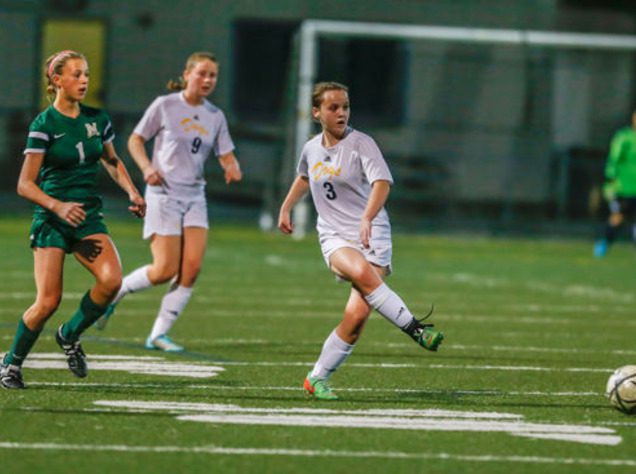The Importance Of Team Organization
Simply enough, a disorganized team rarely wins at any level. Teams must be properly aligned and communicating incredibly well or success will be out of their grasp. These are not ideals that can sprout up overnight, instead, they must be diligently worked on over the entire season, maybe even years. However, merely applying these principles will not lead to success. The team will be successful only if it applies the principles better than the opponent!
Although these may not discuss every detail, CoachUp has outlined the basic traits for you in this article. Once a team is able to hammer out the larger, universal ideas, they’ll be able to start working on the small stuff that takes a good team to greatness. These ideals can span entire categories and umbrella notions, which make it a difficult task to exactly nail down four focus points, but here’s what we think:
Positioning + Defending
Communication + Leadership
Insight of the Game
Decision Making
All these parameters are linked and function as one. Even if only one of them is missing, the team organization is not completely efficient.

Positioning of the players is dictated by the tactical situation. Without insight of the game, it is not possible to realize what is going on. Therefore, it will be difficult to make the correct tactical decision. Communication takes place when information is provided from coaches to players and from players to players. The information varies from positive to negative as well as direct and indirect. For team organization purposes, the information provided is referred to as:
- Decision making (what to do, and how do it)
- Correction of positioning (where to stay)
- Excitement or frustration
Positioning + Defending
This is where the player locates himself on the field while attacking and defending. Given the dynamics of the game, positioning is a dynamic process. This process needs to have points of reference to be effective. The tactical scenario and those points of reference dictate the movements of the player on the field. There are dynamic points of reference and static points of reference which are lines of the field: the midfield line and circle, touch lines, end lines, and boxes.
The dynamic points of reference in defense are:
- Player’s position when the ball is lost
- The opponent’s position with the ball (and how far he is from my own goal)
- The opponent(s) closest to me
- Any opponent running into a space or towards my own goal
- Position and distance of my teammate(s) closest to me (beside me, in front of me, behind me) and furthest from me.
These points of reference give the player an immediate picture of the tactical danger so they can guide his decision regarding where to go and what to do in order to defend. Constant communication between players helps players maintain proper positioning and can prevent vulnerability on defense.
On offense, however, the dynamic points of reference are different for the ball carrier and the other players — those, hopefully, are outlined below.

Ball Carrier
(Note: For simplicity, we will assume whomever possesses the ball has already “scanned” the field and checked all these points of reference to make his decision.)
- His position when he obtains possession of the ball
- Space available to carry the ball (forward or backward)
- Nearest opponent to him
- Position of potential receivers close to him.
- Position of potential receivers near the opposite goal (far from him).
- Direction of movements of the potential receivers and their speed of movement.
Receiver
- His position when the ball is regained and carried by his teammate.
- Position of the opponent closest to him
- Position of other opponents that potentially can double-team him
- Space available to show up or run away in order to receive the pass or just to create a passing channel for other runners.
Meanwhile, the player, at any time, has to ask himself two questions: Given my points of reference, am I in good position? The answer to this question will produce the correction (if needed) given the tactical situation. Given my points of reference and the tactical scenario, where are my teammates? The answer to this question should prompt the players to communicate properly with their teammates regarding the tactical situation.
(Related: Read about playing team defense here.)
Distances
This parameter is relative to the space between the players during both the defensive and attacking actions. Soccer coaches usually want the team compact while in defense, and spread out to create width and length while on offense. It is clear that the distances between the players vary based upon the tactical situation the team is facing.
On defense: The exact distance needed between two defending players is not defined, however, it has to guarantee coverage or limit the usable space for the opponent. This means that while the first player presses or delays the ball carrier, a second player is ready either to double-team or confront the opponent if the first player has been passed on the dribble by the opponent.
If a third player joins the defensive duo, they become a defending triangle that is difficult to penetrate when well-orchestrated. The other defending players, regardless their role, have to adjust their positioning based upon the tactical scenario. This global coverage would discourage penetrations and can delay the opponent’s actions. This gives the other defending players the time to recover and get organized defensively. Employing this tactical solution with every defender on the field creates a dynamic defensive system that is difficult to infiltrate.
Game analysis data shows that a high percentage of the goals scored against are due to neglecting this basic task, especially from forward players. It is imperative that all the players are well aware of their defensive task regardless their role. The team attacks and defends as unit.
On offense: Distances between attacking players is not a defined parameter either. While in possession of the ball, the players have to stretch the field in length and in width to break down the “compactness” of the defending team. The distances created between the ball carrier and the potential receivers vary upon the tactical scenarios, qualities, and abilities of the players. The most crucial is the middle-man player, as this player is very important as he sews the seeds of a possession, linking the play through short and long passes. He is always close to the ball to support the ball carrier no matter what as well. This kind of player is extremely effective in orchestrating the defensive team operations as well.
Communication + Leadership
Communication in soccer means providing information pertinent to the game and is extremely important to keep the team organized in a functional unit. Players and coaches communication forms include:
- Verbal: Most common form as it is direct and, most of the time, clear for the recipients.
- Body Language: Natural way to express feelings.
- Conventional Signs: Using different types of hand or body signals in soccer is common but meanings can vary from team to team.
Furthermore, every soccer culture has its own signs language that is different from the others. Coaches and players on the field use a mix of those forms of communication. Regardless of whatever type is used, the communication content must be appropriate to the situation. Leadership is expressed through communication. These leaders on the field are consistent in their communication with teammates. Their tone of the voice should always be appropriate, positive, and help to the tactical and psychological situation.
Insight Of The Game
Insight of the game is the ability to see the dynamics of the game. This is an important quality of the players and coaches. It is important to understand that there is not only one way to read the game. If you ask two experienced coaches about what they saw in the same game, they may report different aspects regarding the game dynamics. This is the reason why it is useful to have an assistant coach to consult with at half time or at the end of the game. The ability to read the game is based upon several factors:
- Experience: The more you’ve played or coached, the more you know and anticipate
- Individual character: Ability to analyze games and training performances
- Social culture of coaches + players
Reading the game is arguably the most important quality in soccer. Some even argue that this is a quality that is innate and not teachable. This quality enables the players and coaches to not get lost in the game. When the dynamics of the game are clear, the players are able to find the correct positioning on the field and implement the correct tactical solution. The ability to read the game can compensate for the lack of other soccer qualities such as physicality. Being in the right place at the right time and do the right thing can beat speed and power but not technique and mental strength.
Decision Making
The name of this parameter of team organization is self-explanatory. Whatever players and coaches decide to do on the field will dictate the outcome of the game. Decision making is a process that depends on few important factors — including insight of the game and all its parameters, like experience, character, game analysis ability, and soccer culture. Additionally, we’ll see ambition, challenges, self-confidence and goals come into play as they’ll all majorly differ from player to player.
(Related: Read about the number 10 here.)
Huddle Up
As we can see, most of these factors are emotional and mental factors. Soccer coaches should have different interpretations of these factors than the players. The coach has to be careful to not identify his personal ambition, self-confidence, and goals with the real team potential. Players have to apply their strength and commitment for a common goal. Every decision must follow guidelines that do not sacrifice the freedom to express their creativity.
It’s not easy to apply all these traits and habits at the beginning of a season. But if a team works diligently at it, they may develop into a cohesive unit worthy of defeating anyone. However, if you’re struggling with your role or understanding of a particular principle, consider booking one of CoachUp’s private trainers to help you out. Their advanced knowledge will have you fitting into any team role in no time — what are you waiting for?
How useful was this post?
Click on a star to rate it!
Average rating 4 / 5. Vote count: 5
No votes so far! Be the first to rate this post.



